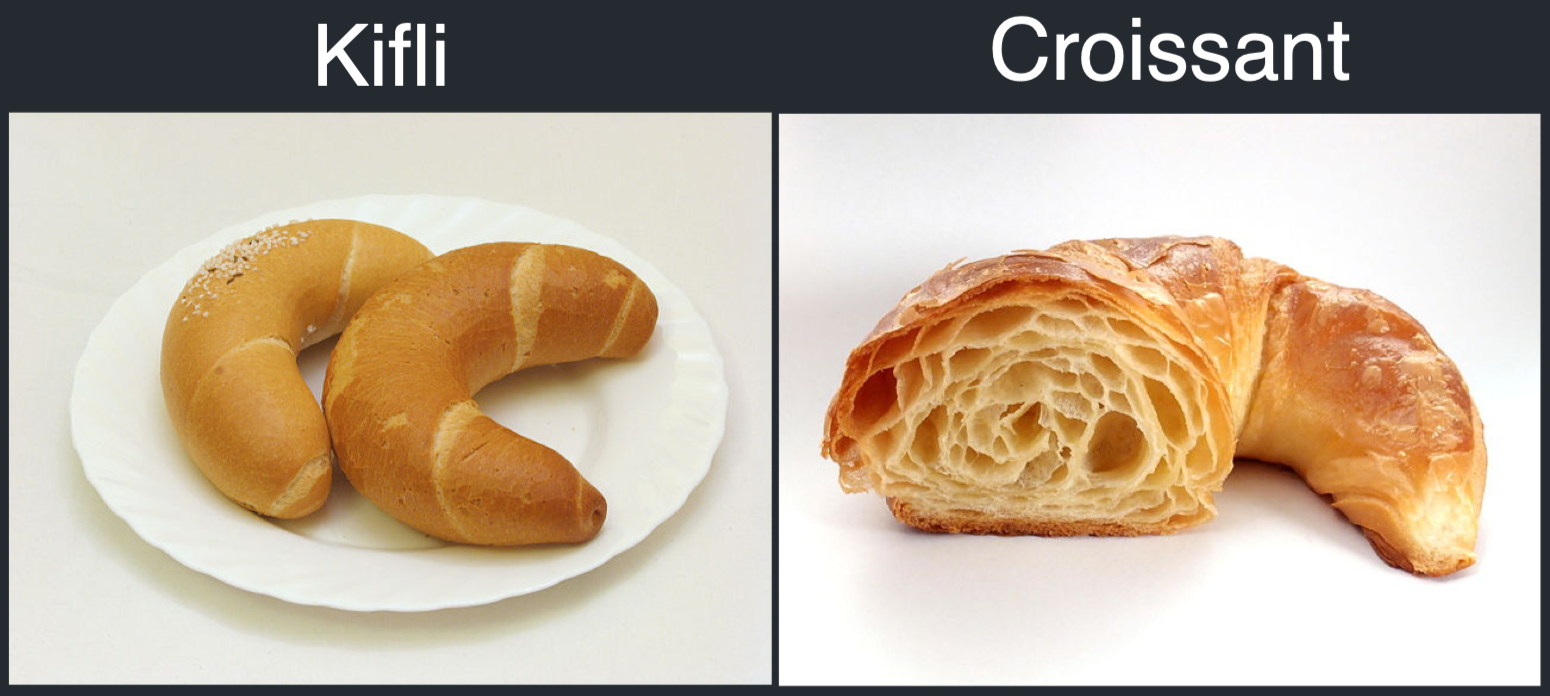Croissants are cutting edge technology
January 2023
The flaky, buttery delight known as the croissant has only been around for a couple hundred years—a tiny blip in the grand timeline of humankind’s presence on this planet.
But croissants represent a refinement of a recipe that’s been around for nearly a thousand years, and which represents quite a bit of technological sophistication in its own right.
The central European kifli is a crescent-shaped treat, sometimes a roll and sometimes a cookie. The first documented mention of kifli was in 1227, and no doubt they’d been on breakfast plates for some time before then.
To make kifli, humans had to discover and control fire, and learn to build ovens that allow us to regulate temperature while baking. We had to adopt agriculture, domesticate wheat, and implement a division of labor that creates a surplus of the crop. We had to invent the mill, to process wheat into flour. And we had to have some type of understanding of yeast, and how it works.
Lots of work! Thanks, ancient humans.
And at the same time … kifli is a pretty simple recipe. They can be sweet or salty, bread-like or cookie-like, but the basic recipe comes down to:
- Put the flour, water, sweetener, yeast, and salt into a bowl and make a dough
- Form the dough into cute lil’ crescent shapes
- Bake
Croissants are on a whole other level.
To go from kifli to croissants, humans had to understand the way butter and flour interact at high temperatures. Specifically: If you mix butter into your dough, you get a buttery roll. But if you keep the butter cold, and layer it within the dough, it will vaporize in the oven. When that happens, it puffs up the layers of dough surrounding it.
This is a delightful effect, but you’d hardly notice it if you just used one layer of butter. So, depending on your recipe, you’ll layer the butter and fold the dough over, then roll it out and fold it again, several times.
This process increases the number of butter layers at a geometric rate: 1, then 2, then 4, 8, 16.
(Of course, humans have understood geometric progressions at least since ancient Mesopotamia, but someone had to bring the concept into the kitchen.)
Cool but … who cares?
In order to enjoy a croissant, you don’t have to know the arcane history of baking, nor do you have to think of them as technology.
But if you do think of them as technology, as I would urge you to, they might help reframe your expectations when you’re presented with the next exciting innovation.
Croissants represent an evolution of an already-beloved part of everyday life, one that builds on existing knowledge and harnesses a deep understanding of how the world works in order to produce something that is absolutely delightful.
This is what technology should do for us. Don’t look at robot police dogs, or babbling automata, or a weird thing that flies around your home in order to sell you stuff and ask “Hmm, how might this be useful?” Ask instead: “Is this as good as a croissant?”
